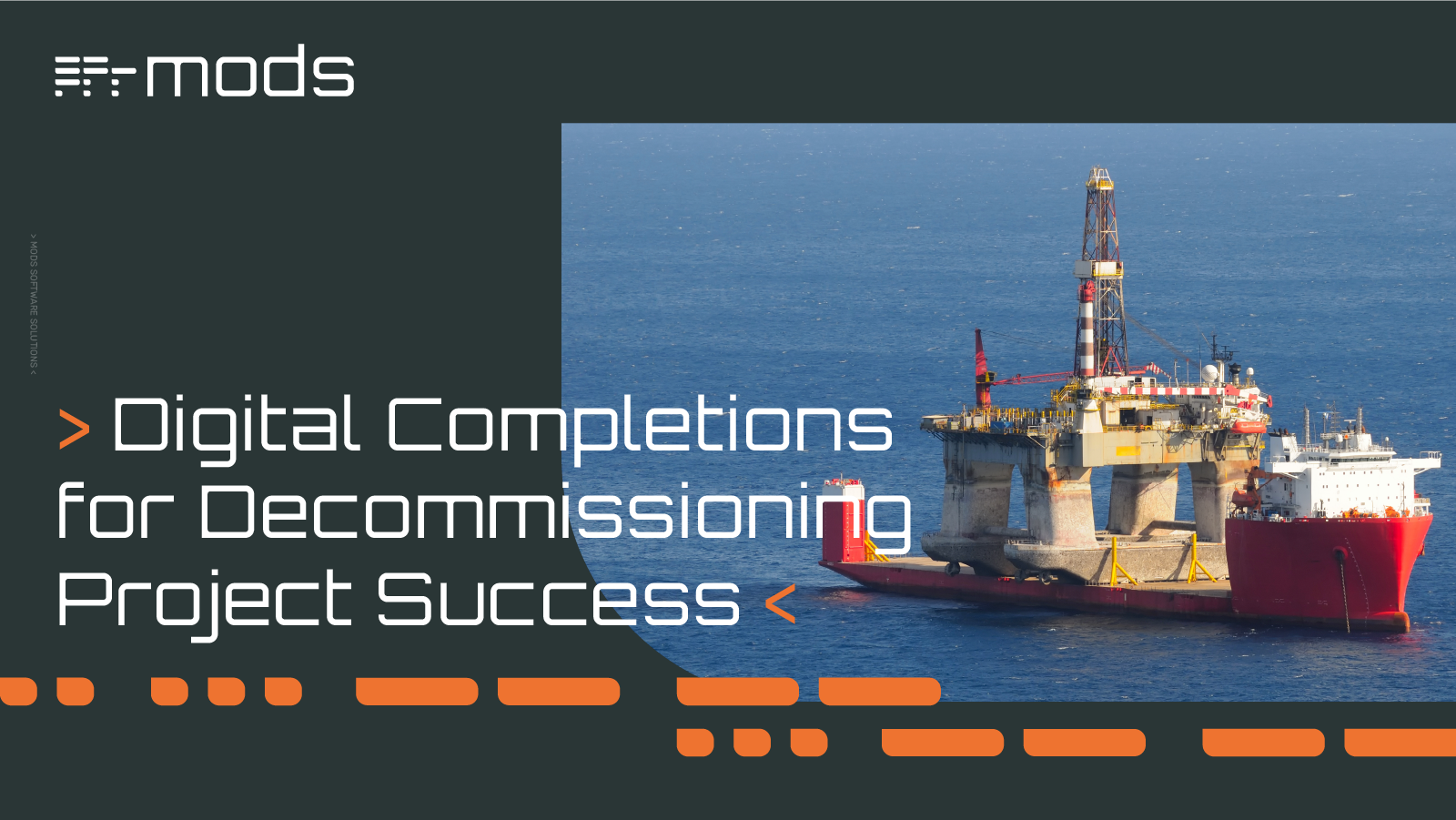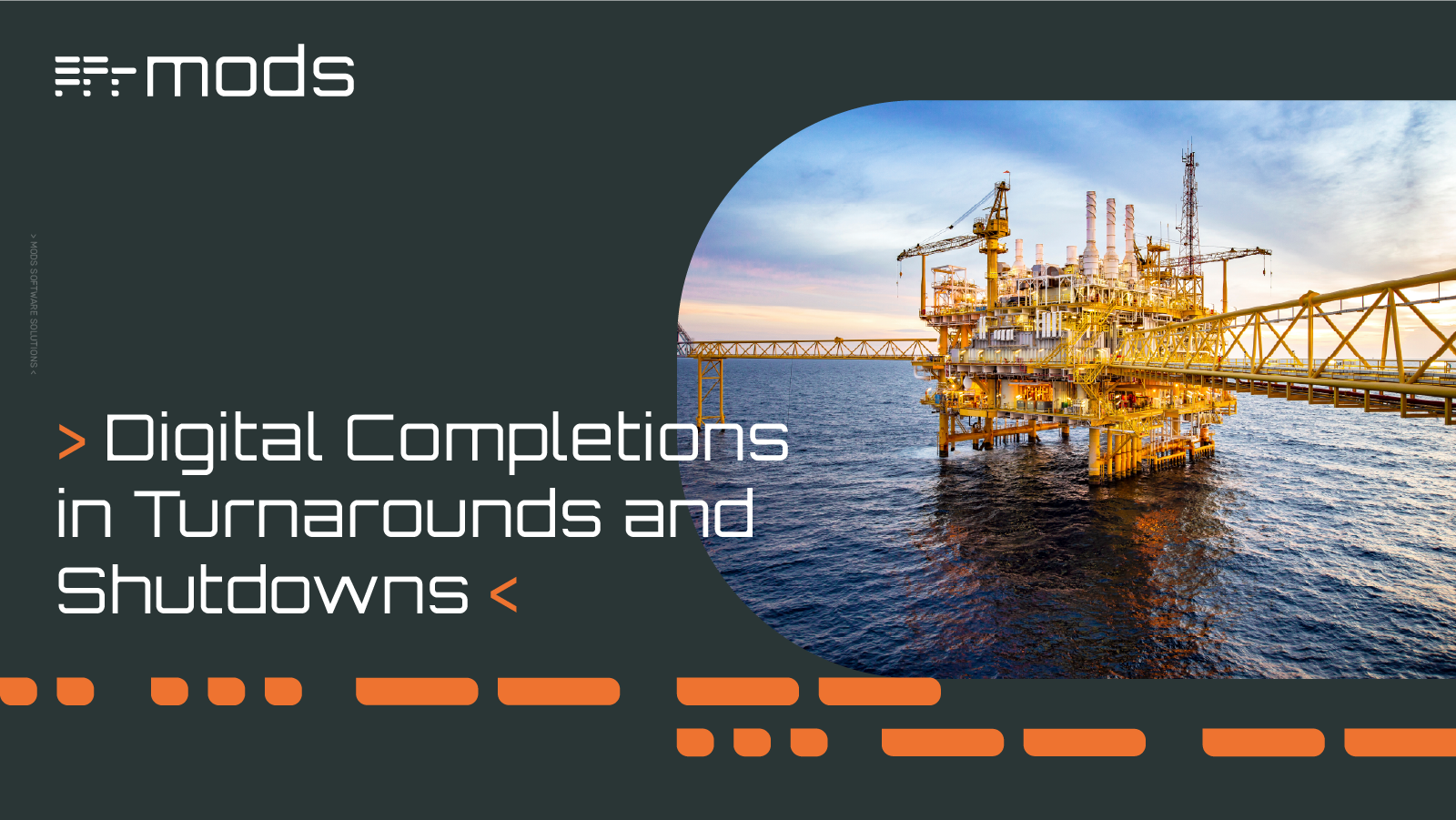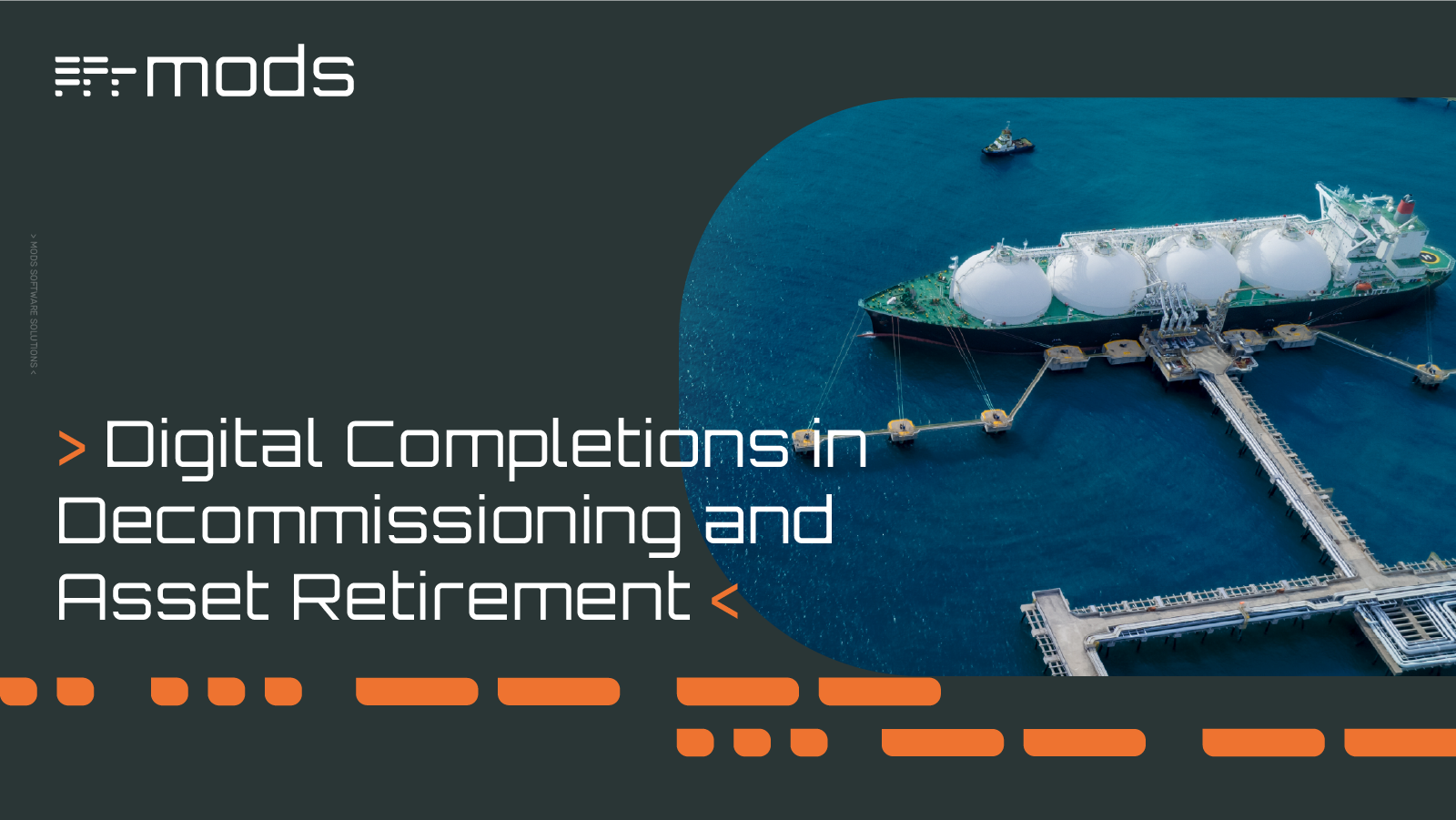Digital Completions in Plant Modifications and Upgrades
Unlike greenfield or any new build construction projects, plant modifications and upgrades present a unique set of challenges. Work is carried out...
3 min read
 Lisa De Vellis, PE
:
Nov 13, 2023 8:00:00 AM
Lisa De Vellis, PE
:
Nov 13, 2023 8:00:00 AM

Offshore decommissioning projects present unique logistical challenges and safety complexities. Dismantling large structures and recovering topsides and jackets to shore for reuse, recycling or disposal requires the coordinated isolating of systems, sequential resource allocation and staunch attention to safety throughout the process. To achieve success in decommissioning projects, efficient completions management is essential.
Digital completions solutions revolutionize the way offshore decommissioning projects executed, providing real-time data, reliable documentation and enhanced safety measures. In this blog, we explore how digital completions solutions contribute to the success of decommissioning projects.
Completions certifications assure the nature, quality and safety of work performed, from individual tasks or installations to final delivery of the project at large. Given the myriad of environmental, mechanical and industrial safety risks in offshore decommissioning, digitalizing these processes impacts whether decommissioning projects are executed on time, under budget and to standard.
Completions certifications are essential documents that verify the successful delivery of work. While completions, synonymous with handovers, is more commonly associated with construction versus deconstruction (as decommissioning projects are), capitalizing on the power in this process ensures the quality-assured and continuous flow of accurate information for informed decision making.
In offshore decommissioning projects, managing weight is of paramount importance. As large components of the structure(s) are dismantled and removed, downstream lift and barge contractors require guide weights. It is crucial to track the weight of removed segments to ensure safety as well as efficiency (and totality) of removal and transport. Digital completions solutions monitor weights, controlling this process with accuracy and ease of communication.
Ensuring a Safety First culture in decommissioning projects is a non-negotiable, and digital completions solutions play a pivotal role. By ensuring proper documentation and easily accessible certification of each step of the process, these solutions guarantee that the delivered project is mechanically sound, as well as adhering to industry standards and regulations, keeping people safe.
Efficient project management relies on accurate and up-to-date information. Completion certifications provide a clear picture of the project's progress, allowing for better planning and resource allocation.
Traditional paper-based completion processes can be time-consuming, error-prone, less accessible and less adaptable to changing project conditions. Digital completions solutions address these challenges by leveraging technology to streamline the entire process. Let's delve into some of the key benefits of adopting digital completions for offshore decommissioning projects.
The expanse of regulatory, environmental, safety and logistical considerations required to execute an offshore decommissioning project demand digital solutions for successful project delivery. These solutions not only streamline processes and enhance efficiency but also play a critical role in ensuring full compliance regarding industrial and environmental health and safety. Through real-time data capture, reliable documentation and simplified certification processes, digital completions tools – especially when used alongside remote asset visualization software – stand to revolutionize offshore decommissioning projects.
As the industry continues to evolve and embrace digital technologies, the adoption of digital completions solutions is likely to become the norm rather than the exception. Companies that invest in these technologies stand to benefit from improved project outcomes, cost savings and enhanced safety measures, yielding a more sustainable and efficient decommissioning process.
Want to learn more about how our solutions can help you?

Unlike greenfield or any new build construction projects, plant modifications and upgrades present a unique set of challenges. Work is carried out...

Turnarounds and shutdowns are among the most critical—and stressful—phases in the management and operation of industrial assets. These planned...

Offshore decommissioning and asset retirement present significant logistical, regulatory, safety, fiscal and reputational challenges. The process of...

Turnarounds and shutdowns are among the most critical—and stressful—phases in the management and operation of industrial assets. These planned...

Offshore decommissioning and asset retirement present significant logistical, regulatory, safety, fiscal and reputational challenges. The process of...

A key workflow integral to all brownfield projects, completions is the final step to quality assured project delivery. It can go very wrong or very...